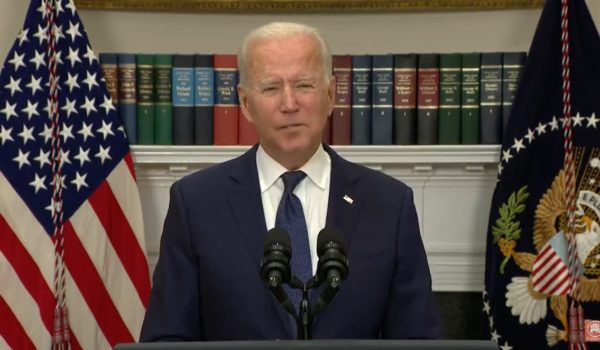
The Environmental Protection Agency blocked a couple from building a home on their landlocked lot for 15 years, claiming it was part of the “waters of the United States” — and insisted they couldn’t challenge its sweeping claim of authority in court, without first being fined up to $75,000 per day for building a home, under the Clean Water Act. The EPA took this position even after previously being rebuked by the Supreme Court in 2012 for trying to evade pre-enforcement judicial review of its position.
Reason Magazine explains:
After a decade and a half…the U.S. Supreme Court may soon decide whether Michael and Chantell Sackett can build a home for themselves on a vacant lot they own in a suburban subdivision next to Priest Lake in Northern Idaho. Their lot has sat untouched since 2007. That was when the Environmental Protection Agency (EPA) told the Sacketts that their property contained wetlands regulated by the Clean Water Act. The couple, said the agency, must get a federal permit before continuing with construction or pay daily fines of up to $75,000. Those demands prompted the Sacketts to sue in 2008. They argue that their landlocked property—which is separated from Priest Lake by a road and a completed row of houses—is not subject to the Clean Water Act. Therefore, they shouldn’t need to go through the long, expensive federal permitting process just to build a home.
Last week, the Supreme Court announced that it would take up the Sacketts’ case, raising hopes that the justices will secure their rights and the rights of countless other property owners who are currently left guessing whether they too are subject to the Clean Water Act’s onerous requirements….At issue for the Sacketts is whether their property contains “navigable waters” regulated by the law. That’s a vague term. The Sacketts had no reason to assume it applied to them when they first purchased the property in 2004. Their lot was, after all, a landlocked residential-zoned piece of land in a mostly built-out subdivision. Local officials, too, were quick to issue them permits to build a home.
Nevertheless, just a few days after the Sacketts started construction, inspectors with the EPA told the couple that pools of water on their property were, in fact, protected navigable waters and that they would have to obtain a permit from the Army Corps of Engineers if they wanted to move ahead with construction. Trying to get that federal permit is a daunting prospect. The Sacketts’ petition to the Supreme Court notes that the average time to obtain a permit from the Corps is two years and costs some $250,000 in consulting costs. “Even when obtained,” reads the suit, “a permit can result in significant changes to the applicant’s intended operations and may substantially limit the use of the property.” That’s obviously a significant burden for the Sacketts. They say they shouldn’t have to shoulder it, given that their soggy-but-landlocked property doesn’t have any navigable waters on it. In 2008, they sued the EPA.
So, what exactly is a navigable water? The Clean Water Act itself defines the terms as “the waters of the United States, including the territorial seas.” The term “territorial seas” is further defined in the law, but “the waters of the United States” is not. That ambiguity has given federal bureaucrats a lot of room for interpretation when crafting regulations implementing the Clean Water Act. The scope of those regulations has grown from covering just waters that were “navigable in fact,” like rivers and lakes, to include intrastate streams, ponds, and wetlands whose destruction could impact interstate commerce….Stretching out these disputes is a 2006 Supreme Court ruling on the Clean Water Act in which a majority of justices agreed that some wetlands were indeed outside the scope of EPA regulation. Fatefully, however, the court couldn’t muster a majority opinion on which wetlands those might be….Then-Justice Antonin Scalia wrote a plurality opinion, joined by three other justices, finding that wetlands were only subject to the Clean Water Act’s requirements when they had a “continuous surface connection” to traditional navigable bodies of water. Justice Anthony Kennedy wrote a broader opinion arguing that wetlands were regulated by the Clean Water Act if they had a “significant nexus” to a more traditional navigable body of water.
The result of this mixed decision has been a tangle of contradictory lower court rulings and ever-changing federal regulations all trying to apply that 2006 Rapanos decision. Neither has given property owners any clear guidance on when they have to ask the federal government for permission to use their property. The Sacketts have argued that Scalia’s plurality opinion should be the controlling standard. And because the water on their property lacks a continuous surface connection to another body of water, they say they should be free from EPA clean water regulations. In an August 2021 opinion, the U.S. Court of Appeals for the Ninth Circuit rejected their argument. The court instead said that Kennedy’s opinion should be the controlling standard. It further ruled that the Sacketts’ property—by virtue of being some 30 feet from a small stream that runs into Priest Lake—had a significant nexus to a navigable water. The couple, therefore, have to get that expensive federal permit.



